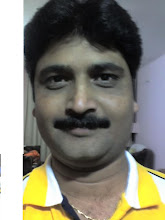The word ‘Communication’ came from the Latin
word communicare,
meaning ‘to
share’.
The act
of teaching and learning
is also an act of sharing the content, skills and the attitudes.
Communication is a
science, which is based
on certain principles,
which can be verified and used to make communication effective.
The technologies,
such as computers, videotapes, video discs, tele-text,
communication satellites and teleconferencing services have stepped in to improve
the nature of
Educational communication.
These technologies
have made the teaching –learning process more lively and
interactive.
Communication technology
is a vitalarea of instruction. It is
an
instructional tool in modern education and
its scope
is increasing day by day and becoming the backbone of teaching.
Education needs many improvements including improvements in the field of Communication Technology. Effective communication is really the dire (dreadful) need of the hour.
S.GEORGE: “Communication
is the ability to transmit thoughts and ideas to others”.
Communication
Definition
To answer the question, 'what is communication?', it appears that communication involves at
least three things:
1.
intention
2.
agency
3.
recipiency
That is to say,
someone (the agent) intentionally instigates a communicative
behaviour, e.g. he or she speaks a message. However, on its own, this act is
insufficient to be described as communicative. An act is only communicative if
it is subsequently received by another person (the recipient). Typically, communicative acts are aimed at instituting some
change in the recipient. For example, if I inform a stranger where I live then
I intend to bring about a change in the stranger’s knowledge, and if I ask a
child to be quiet I intend to change the child’s noisiness. In summary:
Communication is an intentional act performed by
an agent for the purpose of causing some effect in a recipient.
Communication is a process whereby information is enclosed in a package and is channeled and imparted by a sender to a receiver via some medium. The receiver then decodes the message and gives the sender a feedback.
Effective communication involves the Speaker/Sender, the listener/Recipient, the Channel/medias and the Feedback/response.
Components:
1.Sender
2.Message
3.Medium
4.Receiver
5.Feed back
Functions
of Communication
Communication involves individual as well as collective
activities of sharing ideas, facts, and information.
Thus communication
performs various socio-psychological functions.
Mac-Bride (1980) have given some functions of communication in a
social system.
a)
Information
Communication refers to collective
storage and dissemination of
information for wide utilization by people.
b)
Socialization
Communication helps in dissemination
of information to individuals who get an opportunity to
understand each other and
appreciate others feelings, emotions, ideas and
expectations in a social system.
c) Motivation
Communication fosters the individuals and
community intellectual development and helps
one acquire the
required skills and aptitude to become a productive member of
the society.
d) Education
Dissemination of information enhances the
individual’s intellectual development and helps one acquire the required
skills and aptitude
to become a productive member of the society.
e) Entertainment
Communication
helps in various activities like drama, dance, music, sports etc.
Different
Media of Communication
•Audio Media
•Visual Media
•Audio-visual Media
•Multi-sensory Media
•Mass Media
•Multi-media
Process of Communication
Communication as a two–way process involving interaction
between two or more persons (on giving and receiving ends) is carried
out in a cycle
as illustrated below.
There are six main components or elements in general in
any process of communication.
1.The source of
communication
2.Contents of
communication or message
3.Media or Channel of
communication
4.The Receiver of the
communication
5.Response Material/
Feedback
6.Facilitators or
Barriers of communication
Theories or models of communication
•The basic communication theory
indicates that there must be four elements-source, message, channel, and destination,
in the communication process.
•Any
communicator sends message through a channel to the process. In the technical
jargon (language), the communicators known as the encoders, the message whether words, picture or signs
is called symbol, the channel may be one of the media or
means and the audience is called decoder. The diagram of this
basic theory is as simple as this:
Wilbur schramm's circular diagram
According to him both the
parties communicator
as well as audience should play the ideal roles as senders and receivers.
SMCR model by David K. Berlo
•Another
theory or model of communication is known as SMCR developed by David K. Berlo this model emphasizes the psychological nature of communication and provides as analysis of messages and of sensory channels
of communication.
•
•In
this model source
is considered along with communication skills,
attitudes, knowledge and socio cultural context. Message includes content
treatment and code. channel consists of eyes, ears taste, nose and touch and
receiver comprises communication skills, attitudes, knowledge and socio-cultural context.
•Berlo has rightly made it clear that encoding or decoding a message successfully will depend heavily on the
communication skills, but the sender’s as well as the
receiver’s attitude of the recipient is favorable towards the
source, reception of the message will be different,
if it is otherwise.




No comments:
Post a Comment